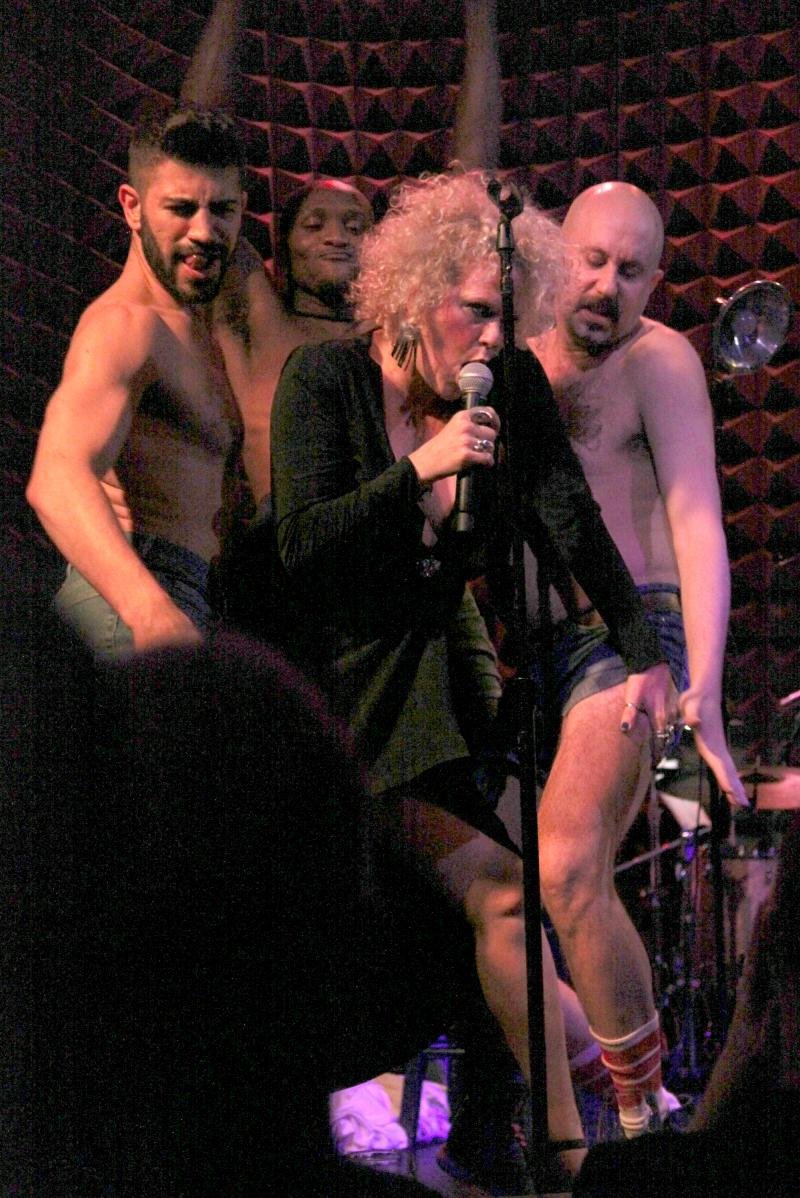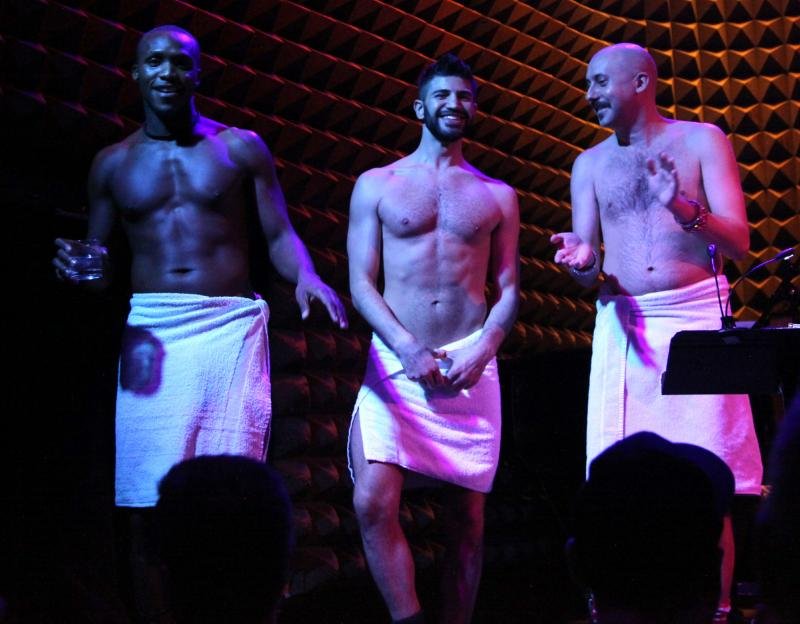cruising contemporary art: the baths
Upon entering Amber Martin’s “Bathhouse Bette,” audience members are required to coat-check their street cloths and don a white towel. Once inside, awaiting the titular performance, they’re invited to mingle with a cocktail, dance to the disco on vinyl, or cruise the active upstairs darkroom. “Sure, some of the glazey-eyed super sluts were still going at it [upstairs], but for the most part, everyone came down and sat to listen to Amber in this sweet familial way,” said Woody Schticks, who was present at the performance’s fourth installment as part of New Orlean’s Labor Day gay festival, Southern Decadence. Before and after Martin’s ballads, sex was everywhere: “I was sitting with some girlfriends and these two guys—this on and off couple—they were just railing into each other! I loved it!” Schticks said.
Martin’s event is inspired by Bette Midler’s 1971 performance at the Continental Baths in New York City; though, she isn’t doing an impersonation of Bette so much as taking a cue from the proto-faghag songstress; Martin is by all accounts, an incredible singer and storyteller, able to command a reverent audience. Its first iteration was in the fall of 2019, where the aesthetics of cruising were referenced via a few male models wearing towels on stage at Joe’s Pub, also in the East Village. By its third installment (after one virtual performance during the pandemic), part of 2022’s Southern Decadence, cruising was an active agent within the performance space.
“Bathhouse Bette” is an explicit example of the ways that 1970s public cruising cultures are inspiring contemporary art and cruising; but, it’s also indicative of the ticketed pop-up event that has come to dominate deviant public sex cultures. For cis gay men—especially during an event like Southern Decadence that is marketed as a weekend-long fuck-fest—there are a plethora of options: at Hit It! which pops-up in spaces throughout New Orleans seasonally, gay sex is central with leather slings hanging in temporary dungeons; Horsemeat Disco is a DJ’d house and techno danceparty with an implicit uniform of MDMA-sweat soaked jockstraps; Gimme a Reason is another techno party that has a monthly reservation at Poor Boys Bar. While advertisements for these parties do evoke vintage aesthetics (such as the album cover of Patrick Crowley or BUTT Magazine), what makes “Bathhouse Bette” singular is not only that it names its historical reference, but goes about successfully merging an art event with cruising and semi-public sex.
^ comedienne Amber Martin sings while male models in white towels dance on stage.
< Gimme a Reason’s washed out aesthetic references the resurgence of BUTT MAG, a once-discontinued gay publication that was also alluding to the look of ‘90s gay porn serials.




